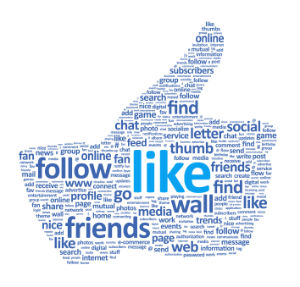 When Twitter launched and started to get a lot of buzz, I was skeptical. I didn’t get it at first. Like many others, I signed up and started to experiment to see what all the noise was about. After a little while it clicked for me and Twitter (@leeodden – @toprank) has been an instrumental communications channel ever since.
When Twitter launched and started to get a lot of buzz, I was skeptical. I didn’t get it at first. Like many others, I signed up and started to experiment to see what all the noise was about. After a little while it clicked for me and Twitter (@leeodden – @toprank) has been an instrumental communications channel ever since.
But Twitter is just one social platform of many. Tweets are just individual messages out of many. When it comes to evaluating the effectiveness of your social media participation, are you evaluating individual tweets, status updates, and comments or the overall experience others have by consuming your content?
Twitter has been amazingly valuable to me personally, to my online marketing agency and for my book, “Optimize.” But if I evaluated each tweet, the obvious assessment would be that my Twitter participation is more often a failure because the vast majority of the individual messages I post do not result in public content interactions from others. But does that mean my Twitter involvement or Twitter itself is a failure?
Have you ever posted a message that received little if any response, only to have someone mention to you in person or on another social channel their reaction? Did you think to yourself, “I didn’t think anyone noticed” because your network didn’t respond publicly?
While there’s a lot of media attention about social media, there’s also a lot of skepticism because people often evaluate based on the presence or lack of immediate public reaction. You might hear things like, “I tweeted and nothing happened” or “No one in our boring industry is on Facebook/Instagram/(fill in social network here).”
The point of social media engagement isn’t about participation and that’s the big disconnect for a lot of people. Engagement and participation are a means to a bigger picture end.
The mistake I see a lot of people making in regards to social media participation and with content marketing too, is that they evaluate individual messages, content, or social objects vs. seeing the effect those social and content objects have as a whole.
To evaluate personal or even professional social media effectiveness, consider the collective impact of your participation, not just individual actions. Part of the value social networking brings is that people come to know you. They see some of your personality but also your professional interests and expertise.
The outcome of that kind of connection can translate into trust and confidence in your expertise, even though you’ve never met in person or done business together.
In my many years as an online marketing consultant, I can’t even count how many times prospective clients have approached me saying, “We follow you on Twitter, read your blog, and have a project we’d like to hire you to help us with.” What’s not to love about that sales cycle? What’s the cost of a sale when a new business educates itself to a sale and seeks you out?”
To make a little more sense of how to better understand the value of individual social media participation, here are a few essential questions to answer:
Who are you? What do you want to be known for? What do you stand for? What’s unique about you?
What makes you special? How are you incorporating your professional “unique selling proposition” into your social content, sharing, and engagement?
Have you looked in the social mirror? Have you looked at the past 20 tweets that you’ve published? Do the same on LinkedIn, Facebook, Google+, Pinterest, or other social networks you’re involved with. When looking at 10 or 20 social content objects together, you can see what kinds of messages you’re sending and determine if those threads support your social objectives or not.
Are you reactive or proactive? Are you thinking about the impact of your social content on others or is it mostly a form of self-expression in the moment? If you have professional objectives from your social participation, think about that each time you tweet, update, or comment.
What’s it like to experience you on the social web? Rather than viewing each tweet, update, comment, or blog post as a standalone engagement effort, think about how others will view the cumulative of your social engagement. What memes can be found within your own social content streams? Do they support what you stand for? Do they reinforce what you want to be known for?
Sure, social networking can be fun and the satisfaction that comes from seeing a tweet get retweeted by hundreds of people or a Facebook status update get hundreds of “likes” and numerous shares is motivating. But think about the overall experience of others that follow you, not just each individual piece of micro-content.
Some connections may never interact with you until they’ve seen the 10th super interesting thing you’ve posted. It would be a shame to stop or assume a lack of success prematurely just because you’re focused on social sharing counters instead of the larger impact your social content and participation has on those who are connected to you.
Does this mean you shouldn’t monitor the impact of individual social and content objects? Of course not. Just don’t think you’re a failure or that the social platform isn’t for you just because of what’s not directly observable. Consider both the public and latent impact of your social engagement and you’ll realize the crack-like spikes of retweets don’t compare to the overall winning of hearts and minds within your community where it matters most.
A version of this post originally appeared on ClickZ, Social Media Smarts.


